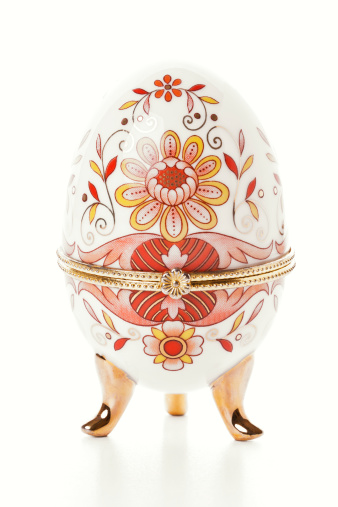 By Constantine Muravnik
By Constantine Muravnik
On the 31 of March, all Western Christian churches will celebrate Easter. However, the Russian Orthodox Easter, Па́сха, falls on May 5 this year. This is so because the Russian Orthodox Church still follows the older Julian, rather than Gregorian, calendar. The “older” calendar is referred to in Russian as the “Old Style” (Ста́рый стиль), the “newer” one as the “New Style” (Но́вый стиль).
Regardless of the calendar difference, both Eastern and Western Churches use decorated eggs for Easter. Russians continue using real hard boiled eggs either painted in various colors and ornaments or simply, and more traditionally, died brown-red with onion skin. This type of Easter Eggs (Пасха́льные я́йца) is perfectly edible. Here is a simple recipe that you can try on your own.

The origins of this tradition are less than clear. According to one legend, when Mary Magdalene told Tiberius that Christ had risen from the dead, the Roman Emperor who was holding an egg rejoined that that was as impossible as for the egg in his hand to turn red. Upon these words, the egg did change its color and became red. There are other more symbolic explanations of the tradition, which connect the Easter egg with the empty tomb of resurrected Christ as well as with the pre-Christian symbols of wholeness and spring.
The world-famous Fabergé Eggs (яйца Фаберже) are another elaborate variety of the same custom. In 1885, the Russian Tsar (царь) Alexander III commissioned Carl Fabergé, a St. Petersburg jeweler of Baltic German descent, to make the first Easter egg for the Royal Family. Nicholas II continued his father’s tradition for every Easter through the end of the Russian monarchy in 1917. All together, 54 Imperial eggs were made, out of which 46 have survived. The Fabergé eggs enjoyed great fame and the jeweler made similar eggs for other distinguished clients such as the Duchess of Marlborough, the Nobels, the Rothschilds and the Yusupovs. Besides the Armory of the Kremlin (Оруже́йная пала́та Кремля́) and two other museums in Moscow, you can see Fabergé Eggs on display in different U.S. museums.
On Easter Day (на Па́сху), Russian Orthodox Christians greet one another in liturgical Old Church Slavic (not modern Russian): “Христо́с воскре́се!” (“Christ is Risen!”) with a response “Вои́стину воскре́се!” (“In truth, He is Risen”), exchange Easter eggs, and kiss each other three times alternatively on the check. This “triple-kiss” – as opposed to the French “double kiss” – is a traditionally Russian way of greeting friends and family on all occasions.